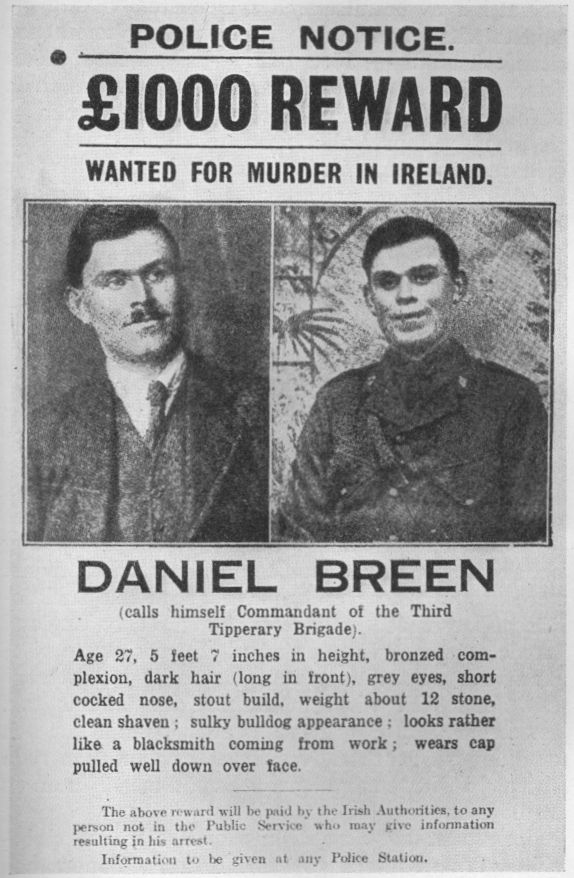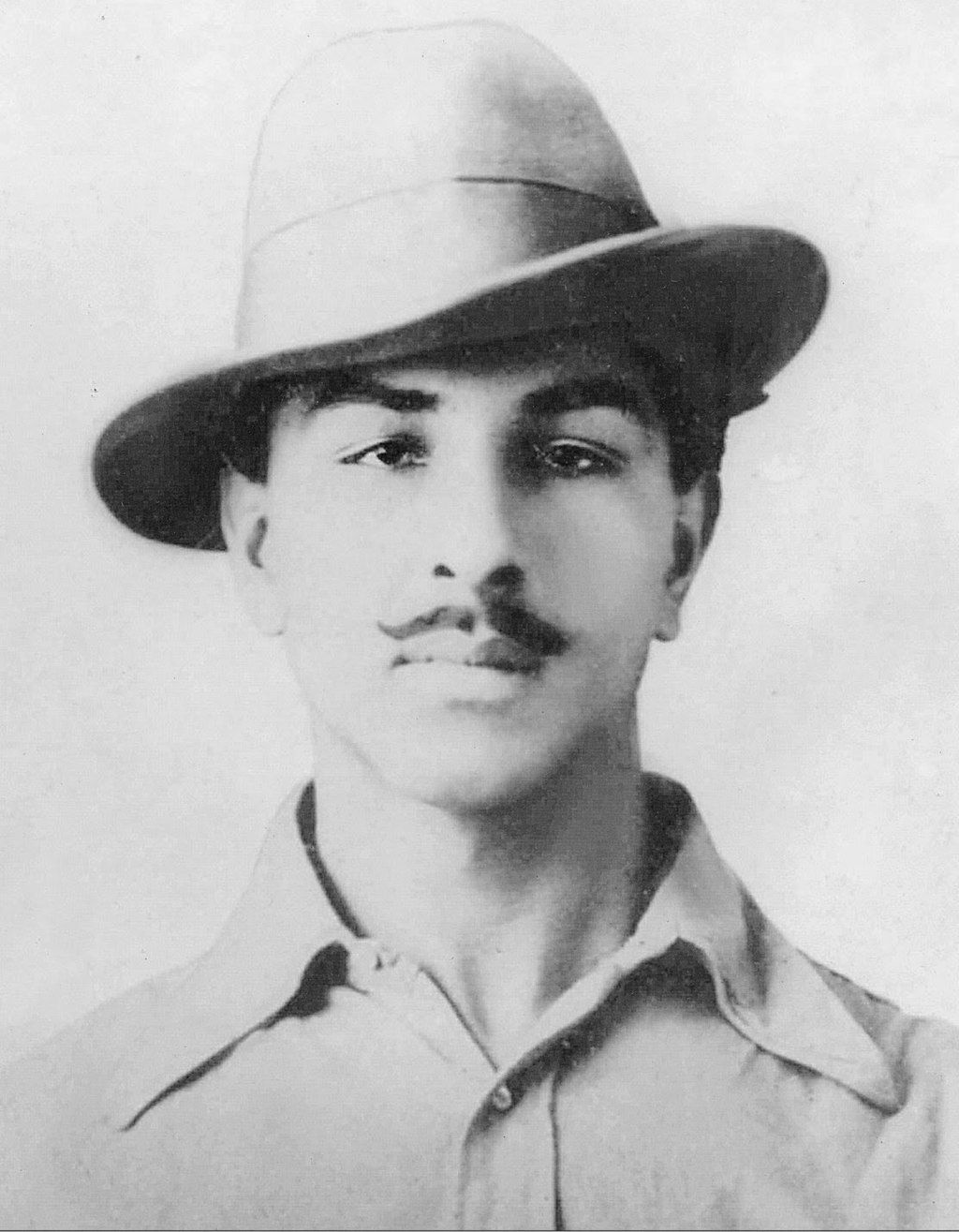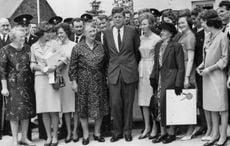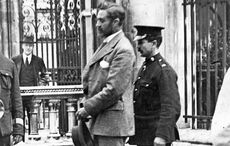“In every Chittagong home, Kalpana Dutt is called "Amader Meye" our daughter,” as per P.C. Joshi ( husband of Kalpana Joshi née Dutt), first General Secretary of the Communist Party of India, and one of the leading figures of the communist movement in India.
But who was Kalpana Dutt and what did she do, to get the honorary address of being a daughter of residents of Chittagong?
Well, Kalpana Dutt was a young comrade of the great Indian revolutionary freedom fighter “Masterda” Surya Sen and was a part of his Indian Republican Army and participated in Anti-British activities in Chittagong, colonial Bengal, in to gain Indian independence.
She escaped being hanged by the British because she was a girl and only eighteen. She was condemned to become a prisoner for life by the British overlords of pre-independence India, but as per P. C. Joshi, their people got her freedom. She had gone to jail as a mere girl and came out as a young woman after serving only 8 years.
Dan Breen and Indian Republican Army
Readers must be wondering why they are being informed about a revolutionary anti-colonial movement in far-off Bengal in India thousands of kilometers away from Ireland. Well, there is a cogent reason for it.
The activities of the Indian Republican Army were actually inspired by an Irishman named Dan Breen. The aforementioned revolutionary freedom fighter Kalpana Dutt, mentions in her book Chittagong Armoury Raiders that “Masterda” Surya Sen "used to tell us how India would become free by fighting the way the Irish fought".
"It was when I was with him that I read Dan Breen's "My Fight For Irish Freedom" several times. Dan Breen was Masterda's ideal. He named his organization the Indian "Republican Army, Chittagong Branch" after the Irish Republican Army. He himself was its President. Masterda used to say our aim is to win freedom. not to mount the gallows and merely get killed. But we are a handful, we shall not get freedom through our own acts alone. Our revolutionary acts must awaken the masses and draw them more and more to the path of revolutionary struggle. This is where our sacrifice for the country is valuable.”

Dan Breen’s book, My Fight for Irish Freedom, was widely read by revolutionaries in Bengal, being prohibited under censorship laws that referred to it as a ‘terrorist textbook.’ as per the report by R.E.A. Ray, Special Superintendent IB, CID, 1 Jan to 30 June 1927.
It is fairly well known that the Chittagong Rising of 1930 was an attempt made by Surya Sen and his followers to re-enact the Easter Rising of Dublin, 1916, in Chittagong. As per A. Sen in his research paper, “The Proscription of an Irish Text and the Chittagong Rising of 1930.” it is mentioned that what has been grossly overlooked by nationalist historians is the role of an inflammatory Irish Text ( Dan Breen’s Autobiography) in providing the Chittagong revolutionaries with ideas and trajectories to carry on their struggle against the British government.
Nor has any attempt been made so far to assess the extent to which the Rising in Chittagong can actually be regarded as a re-enactment of the Easter Rebellion and in what ways it differed from its Irish counterpart. As per Dr. Dalia Ray in her book Landmarks in Indian Anthropology, the ideas of Swadeshi and boycott had been formulated long ago by the Irish and American revolutionaries.
Nevertheless, credit must be given to the Bengal revolutionaries for evolving the idea of a five-pronged boycott (i.e., economic, social, political, judicial, and educational), and placing before it a definite political object, namely liberation from British rule.
Dan Breen and The Hindustan Socialist Republican Army
Shaheed-E-Azam Bhagat Singh, Indian revolutionary freedom fighter inspired by Dan Breen.
The Chandigarh paper Tribune, in its edition of 5 December 2003, reported:
“‘My fight for Irish freedom’, which was written in 1921, was published in 1924. ‘It inspired Shaheed Bhagat Singh so much that he made up his mind to jump into the freedom struggle after reading it and even translated it into Hindi and Punjabi,’ maintained Prof Jagmohan Singh, a nephew of Shaheed Bhagat Singh and son of the martyr’s sister Amar Kaur.
“The book was translated first in Hindi and was published in 1925 while Shaheed Bhagat Singh was in Kanpur and was working with ‘Partap’ newspaper.”
Professor Jagmohan Singh, says that in the year 1923-24, Bhagat Singh was translating the famous Irish revolutionary Dan Breen's autobiography 'My Fight for Irish Freedom' into Hindi. This autobiography was published in Pratap Press of Kanpur. Bhagat Singh wanted to know about the revolution in Ireland and the experience of the revolutionaries there.
His goal was to translate Dan Breen's autobiography to reach his revolutionary comrades. Bhagat Singh translated Dan Breen’s autobiography in Gwalior in India, the region conducive to revolutionary activities thanks to its many ravines.
Not just Bhagat Singh, but other Indian freedom fighters also read Dan Breen’s autobiography, one among them was Sachchidanand Hirananda Vatsyayan "Agyeya". By the age of thirty-four, he had been a revolutionary, jailed for fighting for Indian independence, and a captain in the British Indian Army, driven by anti-fascist ideals during the Second World War.
Durga Das Khanna was the former chairman of the Punjab Legislative Council in independent India, but while he was young he was a revolutionary.
He recalls his first meetings with Indian revolutionary freedom fighters Bhagat Singh and Sukhdev Thapar, the Punjab revolutionaries who had formed the HSRA in the 1920s. They recommended Khanna a few books to read and one among them was, Irishman Daniel Breen's My Fight for Irish Freedom (1924). Even Indian revolutionary Shyamji Krishnavarma originally from Kutch Gujarat, supported India’s independence on an Irish model, and Indian freedom fighter Bipin Chandra Pal supported him.
Dan Breen Life and Times in brief
Daniel “Dan” Breen (Irish: Dónall Ó Braoin) (11 August 1894 – 27 December 1969) was a volunteer in the Irish Republican Army during the Irish War of Independence and the Irish Civil War. In later years, he was a Fianna Fáil politician.
Dan Breen was born in Grange, Donohill parish, South Tipperary. His father died when Dan was six, leaving them very poor. Looking back on his upbringing in a family of tenant farmers, Breen was sworn into the Irish Republican Brotherhood in 1912 and the Irish Volunteers in 1914. In 1919 a group of young men barely out of their teens, poorly armed, with no money and little training, renewed the fight, that began in 1916, to drive the British out of Ireland. Dan Breen was to become the best-known of them. His book “ My Fight For Irish Freedom” became an inspirational read for budding revolutionaries in India looking for nothing less than complete Independence for India from British rule.
Recently, the Bollywood movie Sardar Udham was released by Indian Director Shoojit Sircar, based on the life of Sardar Udham Singh who slew, Irishman Michael O’ Dwyer.
Unlike the people of the Indian-Irish Independence League founded in 1932 to fight British imperialism, O'Dwyer supported British imperialists and was responsible for Amritsar Jallianwala Massacre of 1919.
In this movie, Sardar Udham was played by Indian actor Vickey Kaushal, he is shown even as a gunrunner for the Irish Republican Army (IRA), and in one scene he tells an IRA man, “We had our Bloody Sunday”, a reference both to the Amritsar massacre and to the killings of civilians by British troops at a football match in Dublin in 1920 during the Irish War of Independence.
Udham explains to the Irishman, “Your revolution and mine are the same. You lamb, I lamb: the butcher the same.” Innumerable Indian and Irish lives have been taken by the monster called Colonialism, which is best thrown in the dustbin of history.
* Originally published in 2022, updated in Sept 2025.
This article was submitted to the IrishCentral contributors network by a member of the global Irish community. To become an IrishCentral contributor click here.




Comments